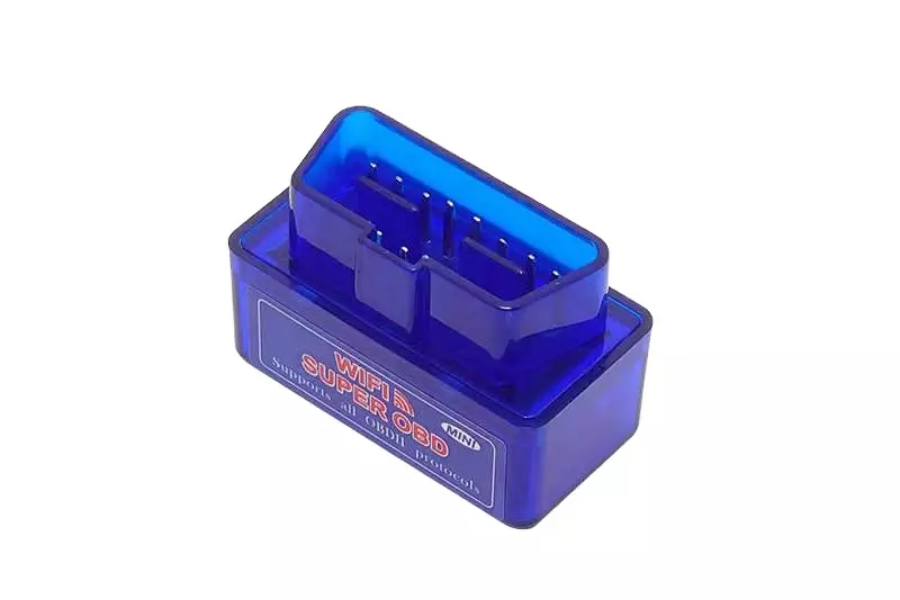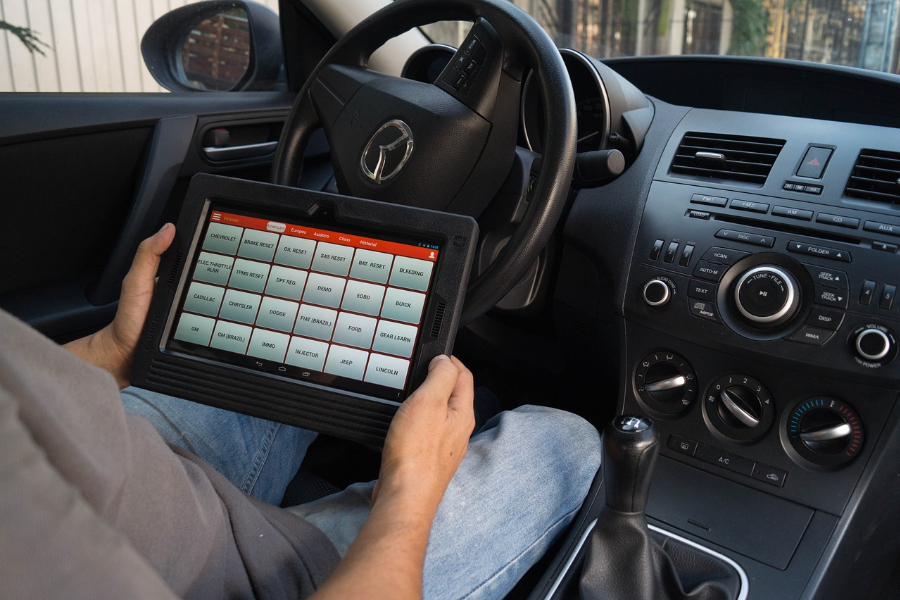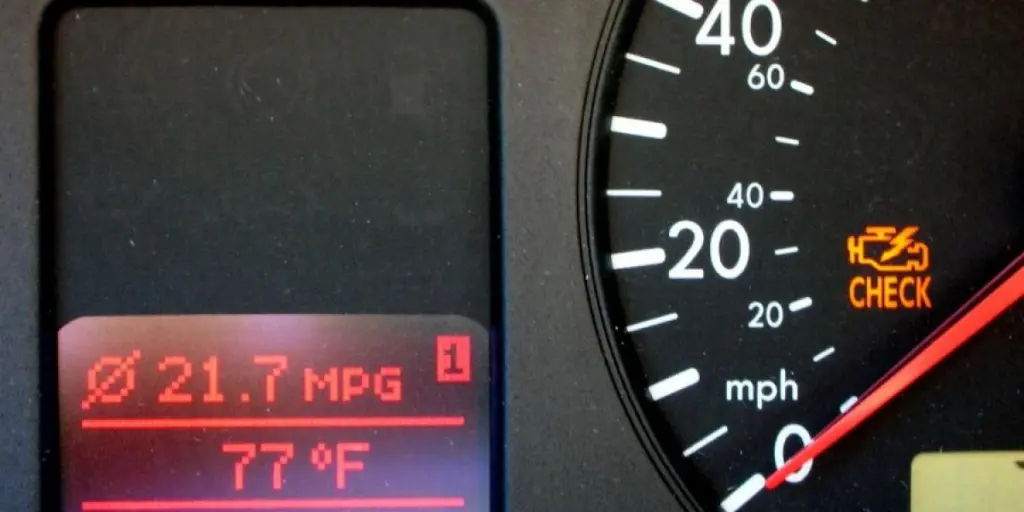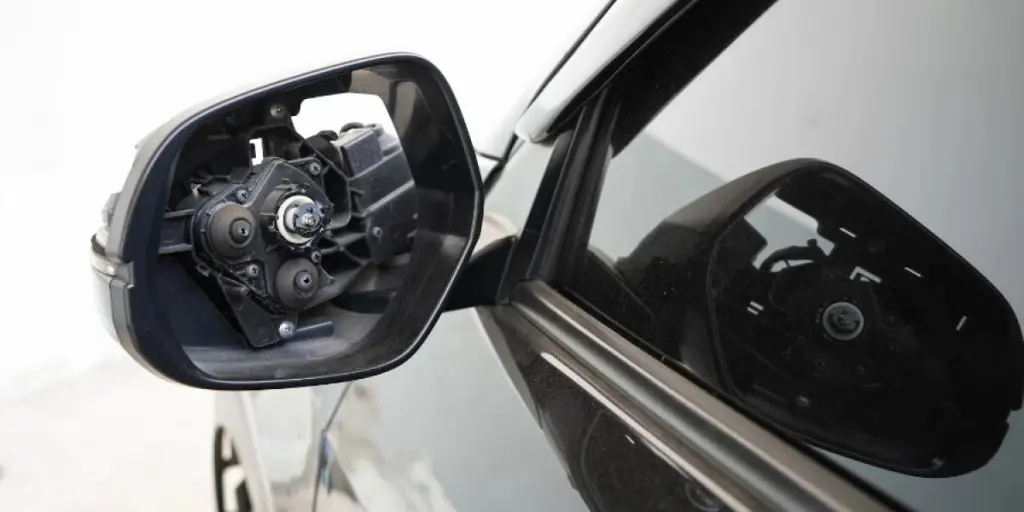Imagine yourself on a long driving journey to an important business meeting when you see the flickering check engine light appear on the dashboard. In view of the rather long-distance trip, you have no choice but to stop at the nearest garage for a quick check. To your astonishment and relief, the mechanic merely brings out a portable device, plugs it into somewhere near your car’s dashboard area, and, voila, within a few minutes, the check engine light goes off right in front of you!
In case you are wondering, the tool that is able to perform such a miracle trick is the OBD-II (On-Board Diagnostics II) scanner. The OBD system is the car scanning system that has been widely deployed since 1996 when it became a mandatory requirement for all American vehicles. Since then, all cars made prior to 1996 have utilized OBD (also known as OBD I) as a car scanning tool, whereas cars made after 1996 adopt OBD II, the second generation of OBD for diagnosis purposes.
The OBD system then went on to be a mandatory requirement for the vehicle markets in the EU, Australia, New Zealand, and China from 2001 onward. With the wide adoption of the current OBD-II system in mind, let’s review its business potential and tips for selecting popular types of OBD-II scanners.
Table of Contents
Market potential of OBD-II scanners
Sourcing tips for OBD-II scanners
Classifications of OBD-II scanners
Stay alert
Market potential of OBD-II scanners
In 2020, the global market for automobile diagnostic scan tools was valued at USD 31.87 billion. And it is anticipated to hit a compound annual growth rate (CAGR) of 5.3% across all types of vehicle diagnostic tools, including both hardware and software, from 2020 up to 2028. The most recent development propelling the boom is none other than the wider adoption of onboard diagnostics (OBD) systems in commercial vehicles.
The research result above covers OBD-II tools from both the original equipment manufacturers (OEM) as well as the aftermarket parts makers. What is the difference? OEM providers are basically the vehicle makers themselves, whereas the aftermarket providers are manufacturers focusing on all sorts of different vehicle parts to be compatible with as many vehicle brands as possible.
As a result, the aftermarket components may not always be a good fit compared to OEM parts but of course, they often compensate for that with a much lower price tag and versatility. In fact, a recent study on aftermarket OBD-II product size presented a rosier future for the aftermarket OBD-II scanner market size, with an aggressive CAGR of 20% expected from 2022 to 2030.
Sourcing tips for OBD-II scanners
Connectivity
Connectivity is one of the most fundamental considerations when sourcing for OBD-II scanners as it will not only affect the exterior of the device such as size and weight, portability, and handheld ability, but it may also cast an impact on the overall performance.
The connectivity of OBD-II scanners basically can be divided into two main categories: wired and wireless. The wired type is normally a standalone handheld device that is fully equipped with its own screen and cable; it is operated by plugging the cable into the OBD port, which is normally near the dashboard of the car with all the readings displayed directly on the screen of the OBD-II device itself.
In the past, most of such handheld devices were not connected to any Bluetooth or Wi-Fi connection, but with current technology advancements, some of the handheld OBD-II scanners are connectable via Wi-Fi or Bluetooth too. Wireless OBD-II scanners on the other hand, as the name implies, normally are much lighter and smaller compared to handheld OBD-II devices since they work without screen displays and perform more like modules/adapters that must be connected to an app via Bluetooth or Wi-Fi in order to be operated.
According to multiple test results, most industry experts believe that wireless OBD-II scanners with Wi-Fi connectivity come with a faster data transfer rate compared to those with Bluetooth connectivity. The prerequisite for such a verdict, however, is that the Wi-Fi speed is reasonably normal, for otherwise, a typical Bluetooth transfer rate may easily outshine a slow Wi-Fi.
Intended usage
The targeted audience of an OBD-II is another critical concern when it comes to OBD-II scanners selection. A very basic OBD-II scanner with some simple code reader functions may serve users who simply wish to understand the issues well.
At the same time, advanced DIY (do-it-yourself) users may look for a more comprehensive analysis on top of having the ability to eliminate the blinking check engine light. And of course, some wholesalers may like to target professional workshops that require not only code reading and elimination but also much more in-depth data analysis as well as data saving abilities.
Professional OBD-II scanners are the choice for this group of wholesalers as they may include programmable functions such as the electronic control unit (ECU) programming and adaptation. Moreover, they are capable of diagnosing more complex vehicles such as heavy commercial vehicles.
Compatibility
While most OBD-II scanners can support the reading of the generic OBD codes for all cars, it is important to take note that not all OBD-II scanners are compatible with every carmaker brand. Such a compatibility issue is bound to arise since from time to time there may be some new carmaker-specific error codes that the universal OBD-II scanners are not able to decipher.
Meanwhile, on top of checking through the hardware and all the functionalities, it is also advisable for the buyers to pay attention to the subsequent software update process. Some OBD-II device makers charge certain software subscription fees for subsequent annual updates. Buyers who prefer to pay only a one-time fee for both hardware and software should better check through the subsequent software fees before proceeding with the orders.
Bearing these potential compatibility issues in mind, buyers who are sourcing OBD-II scanners should first establish their target market, the target vehicle types including vehicle brands, and supported languages to minimize any potential compatibility issues before proceeding to stock up on any particular OBD-II scanner models.
Classifications of OBD-II scanners
The basic

For better market positioning, it’s better to examine the OBD-II scanners according to their respective functions, starting from the basic code reader type of OBD-II tools. As shown in the picture above, a wireless OBD-II adapter, more commonly known as an OBD dongle or stick, can be rather small and compact in terms of its size.
These mini Bluetooth OBD dongles can be easily plugged into the OBD port and connected to any smartphone app with a Wi-Fi connection to conduct the diagnosis and clear codes. Convenience and lightweight aside, the most obvious advantage of these basic OBD dongles is their relatively lower costs since they work without any screen and cable.
In any case, the costs of basic OBD-II scanners with small screen displays and cable can be very competitive too as they cover only the reading and clearing functions of some basic codes. Even for OBD-II scanners with smaller screens for heavy vehicles, on top of standard diagnostics for normal cars and SUVs, the price range can be around the same as other basic OBD-II scanners with small screens. In the meantime, for wholesalers who wish to add a little sparkle on top of all basic OBD-II tool functions, a basic handheld OBD-II scanner with a real-time battery health check function may be worth exploring, even if that means it may come with a slightly higher price tag.
The advanced

As depicted in the above picture, advanced OBD-II scanners often featured important additional reset and diagnostic functions on top of the standard OBD-II diagnosis list. Battery management system (BMS), supplemental restraint system (SRS), electric parking brake (EPB), and anti-lock braking system (ABS) are some of the commonly available additional diagnostic functions available on the advanced OBD-II scanners, such as this advanced OBD-II scanner with huge coverage for various car brandings.
It is also worth noting that the advanced OBD-II scanners are not only restricted to handheld devices with screen displays. This wireless pocket-size OBD-II diagnostic tool, which is controllable via both iOS and Android systems, for example, is featuring full system diagnostic functions including ABS and SRS.
Some advanced OBD-II scanners may also be covering professional features such as live data and ECU information to a certain extent, which makes the advanced OBD-II scanners more feature-rich than other models at a slightly higher cost.
The professional

While the professional OBD-II scanners are supposed to cover many more diagnostic tasks compared to the standard OBD-II diagnostic list and advanced OBD-II scanners, the one obvious outstanding feature that segregates the professional OBD-II scanners from the rest is the bi-directional control and the programmable function. Such dual-way controls and programming functions allow the OBD-II scanning tools to not only be able to receive data from the vehicle but also permit data transmission to the vehicles, thereby performing some particular functions or tests that are commanded by the trained vehicle mechanics.
Another significant difference between the professional OBD-II tools and other advanced models is in terms of statistics or the “total quantity” of certain features. For example, as shown in the picture below, this professional OBD-II scanner can cover almost all types of cars including commercial vehicles. Even though it costs around four-digit, it supports more than 10,000 vehicles including tractors, trucks, excavators, and recreational vehicles, processes more than 31 resets, and is equipped with more than 10 connectors and adaptors for different functions and compatibility purposes.

For wholesalers who would like to target mechanics at different experience levels, a professional OBD-II tool with guided functions and remote diagnosis support may be another good option to explore, especially when it also comes with customization and a low minimum order quantity (MOQ).
Stay alert
The aftermarket OBD-II scanner demand is predicted to increase rapidly, which indicates a substantially growing market for such devices. When sourcing OBD-II scanners, connectivity, target market based on each device’s intended use, and compatibility should be among the top priorities of wholesalers. Three categories of OBD-II scanners are available to wholesalers: entry-level basic models for DIY users, models with more in-depth features for more advanced users, and professional tools designed for skilled mechanics. Visit Alibaba Reads now for further guidance on product sourcing and business ideas.




